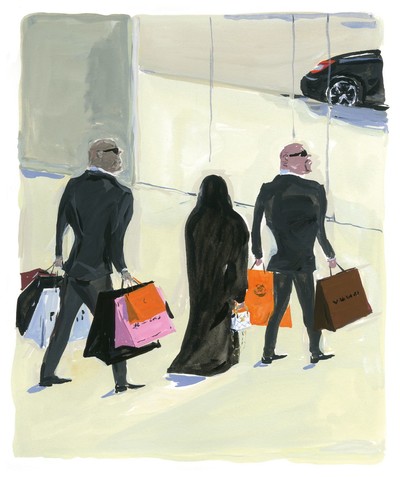Making fashion’s future more responsible.
By Burak Cakmak
Illustration by Jean-Philippe Delhomme
Making fashion’s future more responsible.

My (accidental) career in fashion first began back in 2000 and has since taken me from global, publicly traded companies to small fashion start-ups, US to European brands, high-street retailers to luxury houses, every product category – from garments and leather goods to jewellery and accessories – and most importantly to different businesses that all had different values embedded in their production methods. And every step of the way I became ever-more convinced that fashion as an industry has to be fearless in investigating the consequences of designing and producing clothing, and determined to improve our ethical and environmental standards. Because we all know they need improvement.
Since August I have been studying the fashion world from a different angle. As the newly appointed dean of Parsons Fashion School in New York I now have a real opportunity to influence how fashion moves forward in the future. It’s exciting to have the chance to use my past observations, learning and passion with the younger generation; I can’t wait to help create positive change by instilling new values and beliefs in the industry. Fashion is also a business with innovation built into its DNA, not to mention the passion of some of the world’s most creative people, so it has always seemed strange to me that, while fashion has evolved in parallel with society and culture, it has been oddly slow in leading from the front. There is huge room for improvement in how fashion manufactures and sells its products, so it begins to play a transformational role in terms of reducing its impact.
This makes the future of fashion retailing exciting and challenging. For both emerging and larger brands, the number of prospective consumers is growing around the world, but problems such as resource scarcity, political instability in global supply chains, and unexpected fluctuations in the retail environment, are proving that creative thinking really is required. While ideas big and small are emerging, these foundations need further work to ensure long-term sustainability for both companies and consumers. Concepts such as the ‘circular economy’ and closed-loop production (as being introduced by Kering and H&M for synthetic-fibre production), as well as smaller-scale visions of promoting local production, selling small quantities, upcycling, or using new production technologies such as 3D printing, are all helpful, but only a start. Because as brands are realizing, sustainability and the ethics of fashion are becoming increasingly important for the people who keep them in business: consumers. They are gravitating towards brands that fit their values and which ‘talk their language’. This means that brands have to foster a long-term and real dialogue with their customers, a retail process that passes firstly through building emotional connections and trust. This development looks sets to become ever-more important as the further diversification of the type and size of brands, products, production methods and retail channels continues to remodel the fashion ecosystem. And it is a development that will affect the huge multinational brands as much as start-ups.
Our role as educators is not just to help our students understand this world and to teach them how the creative industries work. But it is also about giving them the tools that allow them to disrupt and revitalize the status quo with exciting innovation. We want our students to begin changing the system even before they join it. And what I have already seen shows that we can have hope. The current generation of students in design schools the world over are approaching their education with open minds and a passion for finding their own distinct path to change. They don’t confine themselves to one aspect of the fashion world, but rather explore as much of it as possible, from sustainable systems, design strategies, constructed environments, data visualization to social justice. This multidisciplinary approach is allowing them to become both adaptable and resilient to the often harsh realities of the global, connected business environment, while giving them the freedom to bring creative solutions to the issues they genuinely care about – and we should, too.
Today I see these fledgling designers express the same curiosity about life that I have felt as far back as I can remember, and it is this desire to question, continuously learn and understand the world that makes me optimistic about the future. Many challenges lie ahead, many barriers to overcome, but I genuinely believe that together we can help fashion do what creativity has always done best: show us new ways to improve our world.